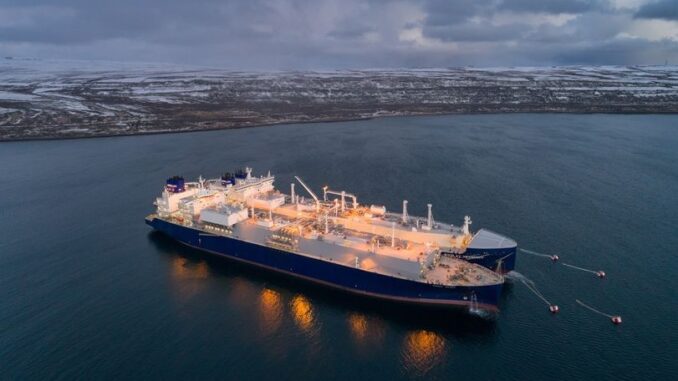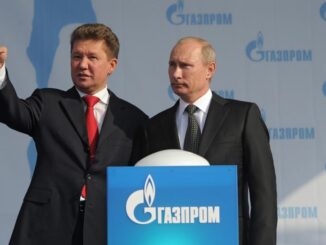
The recent Bloomberg documentary “The Shadow Fleet Fueling Russia’s War” shed light on the armada of aging tankers circumventing sanctions to keep Russian oil flowing. With Novatek’s Arctic LNG 2 achieving its first dropon the 21st of December, a recurring question lately among some of my connections has been: could Russia replicate the strategy used for its oil exports with Liquefied Natural Gas (LNG)? The recent success of this tactic for crude might paint a concerning picture, but the reality of LNG shipping presents several major obstacles that make a similar “dark fleet” for LNG highly improbable.
Limited Export/Import Points = Enhanced Scrutiny
Russia’s LNG exports are concentrated in just four facilities, with the two first located in regions with significantly less maritime traffic compared to major oil tanker routes: Yamal LNG and the Arctic LNG 2 project in Arctic waters, Sakhalin-2 in the Far East, and Portovaya LNG near the Russia-Finland border. This geographically constrained export landscape further strengthens the case against a “shadow fleet” for several reasons. With LNG shipments originating from a limited number of points, monitoring and tracking vessel movements becomes significantly easier. Dedicated satellite surveillance can readily identify any irregular activities or deviations from expected routes. The relatively low traffic in these regions makes any unauthorized or unexplained LNG movements stand out even more. This heightened scrutiny significantly increases the risk of exposure and potential consequences for any party involved in a “shadow fleet” operation. Even if rogue operators would manage to overcome the logistical and technical hurdles of a “shadow fleet,” they would face another formidable obstacle: a near-nonexistent market for sanctioned LNG.
Going Dark: Not an Option
The vast majority of LNG vessel owners and operators are well-established, reputable companies with substantial investments in their brand image and long-term industry relationships. Engaging in a “shadow fleet” operation for sanctioned Russian LNG would jeopardize these hard-earned assets, exposing them to severe financial penalties, reputational damage, and potential blacklisting from key markets. Switching off the Automatic Identification System (AIS) on an LNG vessel would be exceptionally risky and impractical. The risks far outweigh any potential short-term gains, making participation in such a scheme highly unlikely for these established players. Even if some fringe actors were tempted, the overall LNG ecosystem would heavily disincentivize any widespread adoption of such a strategy. In the case of Yamal LNG, transportation relies exclusively on specialized Arc7 icebreakers capable of traversing the harsh Arctic waters, leased from shipping majors like Seapeak, MOL, and Dynagas. Novatek’s inability to complete the procurement and domestic construction of the 2nd generation Arc7 fleet for its flagship ALNG2 project is another reminder of the heavy impact of the sanctions.

Limited Fleet, Diminished Flexibility
The global LNG carrier fleet, numbering close to 700 vessels (IGU, 2023), pales in comparison to the 5,700+ oil tankers operating today. This scarcity hinders a “rogue fleet” by limiting suitable vessel availability even for the aging ones, reducing adaptability due to specialized infrastructure needs, and intensifying scrutiny due to fewer vessels operating. The combination of a limited fleet and stringent terminal monitoring effectively stifles any potential for large-scale “shadow fleet” operations involving Russian LNG. Unlike oil tankers that have greater flexibility in routes and destinations, LNG carriers have specific compatibility requirements for cargo handling at the receiving terminal. This lack of adaptability makes discreet operations or diversion to clandestine markets significantly more challenging. Beyond the inherent traceability of LNG cargoes sent to given import terminals, the process of transshipment adds another layer of complexity. Transshipment involves transferring LNG between carriers at sea, a delicate operation requiring close coordination and expertise. Coordinating multiple LNG carriers for already sanctioned transshipment hubsin remote regions complicates the process. Any attempt to obfuscate transshipment activities for Russian LNG would be even more challenging.
A Shrinking Pool of Buyers
Unlike readily bought oil, the LNG continues to operate largely on long-term contracts (70%) and established relationships. Finding alternative buyers for “off-the-books” Russian LNG would be extremely difficult, and this difficulty would only intensify. Recent events illustrate this stark reality: key foreign shareholders have recently suspended their participation in Arctic LNG 2 due to sanctions. Even Chinese partners like CNPC and CNOOC, traditionally less susceptible to Western pressure, have seemingly become wary of association with sanctioned projects. With these crucial partners stepping back, long-term contracts will be disrupted, and alternative buyers remain elusive. LNG terminals across the globe would become increasingly unwilling to handle sanctioned volumes, fearing legal repercussions and reputational damage. Finding reliable and willing buyers for sanction-tainted cargoes will be an uphill battle. While the share of spot LNG sourced from Russia might technically increase, the overall outlook for future Russian projects remains bleak. Limited buyer interest, lower prices, and amplified logistical hurdles combined with the shrinking market offer no viable or lucrative pathway for a sustained “dark fleet” operation.
Arctic LNG 2 Sanctions Ripple
While the immediate impact of current sanctions on Russian LNG rests primarily on Arctic LNG 2, the uncertainty toward the next wave of projects like Murmansk LNG and Ust-Luga LNG is increasing. Beyond funding those massive facilities and the technological hurdles of developing domestic alternatives, the long-term commercial viability of these future endeavors hangs in a precarious balance. The specialized nature of LNG shipping creates a formidable obstacle for a “shadow fleet” to emerge. The combination of limited availability, reduced adaptability, and amplified risk factors make such an undertaking impractical and perilous. The ‘shadow fleet’ narrative might be dispelled, but the specter of future sanctions casts an ominous shadow over Russia’s aspirations for LNG dominance.
I invite the LNG shipping experts in my network to further explore the specific challenges mentioned above and to provide insights into the complexities of LNG transportation and the unlikelihood of a “shadow fleet” solution for Russian LNG exports. There are also broader implications to these developments, with potential ripple effects on the global energy market and the ongoing geopolitical landscape.



